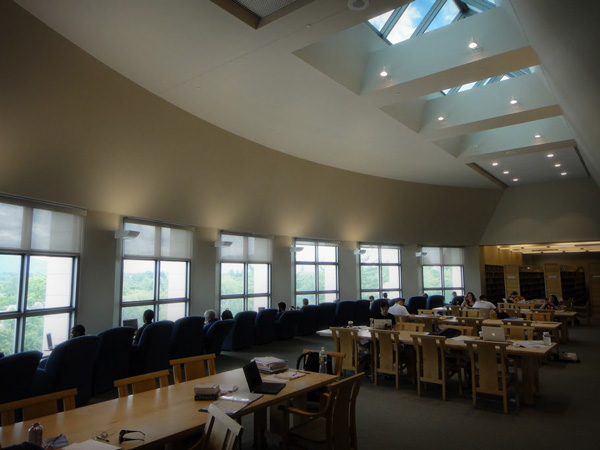One topic which generated a lot of discussion at the Gravity and Cosmology meeting was the void model of the Universe. The basic argument is simple: the dark energy is an ugly addition to our cosmological standard model, with 70% of the energy density of the Universe some mysterious substance with weird properties. From a theoretical perspective, dark energy has the wrong density by many, many orders of magnitude, and worse, we may never be able to study it directly in the laboratory. Now suppose I told you I had a model which explained all of the observations, was based on general relativity, and appealed to no mysterious dark energy component (but still has dark matter, unfortunately). Sounds tempting, right? This is precisely what John Moffat, Chris Clarkson, Antonio Enea Romano, Chul-Moon Yoo, and others were advocating at the workshop (Kenji Tomita has also done a lot of work on this; the model has been around for decades). There’s one important caveat, however. The void model throws out the homogeneity and isotropy assumption. The Universe is now spherically symmetric, with a big hole in the middle. Even worse, we happen to be very, very close to the center of the hole.
 As I discussed in a previous post, John Moffat argues that we shouldn’t be any more disturbed by this model than the standard model, because they’re both anti-Copernican: the void model in space, the standard model in time. As I discuss in that post, I’m not sure I completely agree with this. The fine tuning for the average void model is fairly involved. First, the matter density must be carefully set, as a function of radius, to agree with observation of the luminosity-distance relation. Then we have to be set down within roughly 1 Mpc of the center of the spherical void (which is at least a few Gpc on a side). If we were at a random spot in the Universe, there’s a probability of much less than 1 in 10 billion that we’d end up sufficiently close to the center of a void (assuming such voids existed). On the other hand, the standard Lambda CDM model of cosmology requires fine-tuning of the cosmological constant to a tiny, but non-zero number. To some this is unbearably ugly. But, at the end of the day, it’s just one additional, arbitrary number.
As I discussed in a previous post, John Moffat argues that we shouldn’t be any more disturbed by this model than the standard model, because they’re both anti-Copernican: the void model in space, the standard model in time. As I discuss in that post, I’m not sure I completely agree with this. The fine tuning for the average void model is fairly involved. First, the matter density must be carefully set, as a function of radius, to agree with observation of the luminosity-distance relation. Then we have to be set down within roughly 1 Mpc of the center of the spherical void (which is at least a few Gpc on a side). If we were at a random spot in the Universe, there’s a probability of much less than 1 in 10 billion that we’d end up sufficiently close to the center of a void (assuming such voids existed). On the other hand, the standard Lambda CDM model of cosmology requires fine-tuning of the cosmological constant to a tiny, but non-zero number. To some this is unbearably ugly. But, at the end of the day, it’s just one additional, arbitrary number.
All this being said, what’s great about void models is that they aren’t just a philosophical alternative to the standard model. This is physics. There are measurements that can be done to differentiate (and possibly falsify) these models. Stebbins & Caldwell have come up with one particularly interesting approach, exploiting the fact that “random†observers in a void model see a different sky (and hence, a different CMB) from the one we do in our privileged position. It is surprising that a model so radically different from our standard model is still viable (although under pressure). Tests over the next few years are expected to distinguish these models, and we’ll know definitively whether we are at the center of the Universe.


 Greetings from one of the best places in the world to learn foreign languages! DLI, CIA University? No, a small town in Vermont that hosts an annual summer language institute: Middlebury. To call the
Greetings from one of the best places in the world to learn foreign languages! DLI, CIA University? No, a small town in Vermont that hosts an annual summer language institute: Middlebury. To call the 
